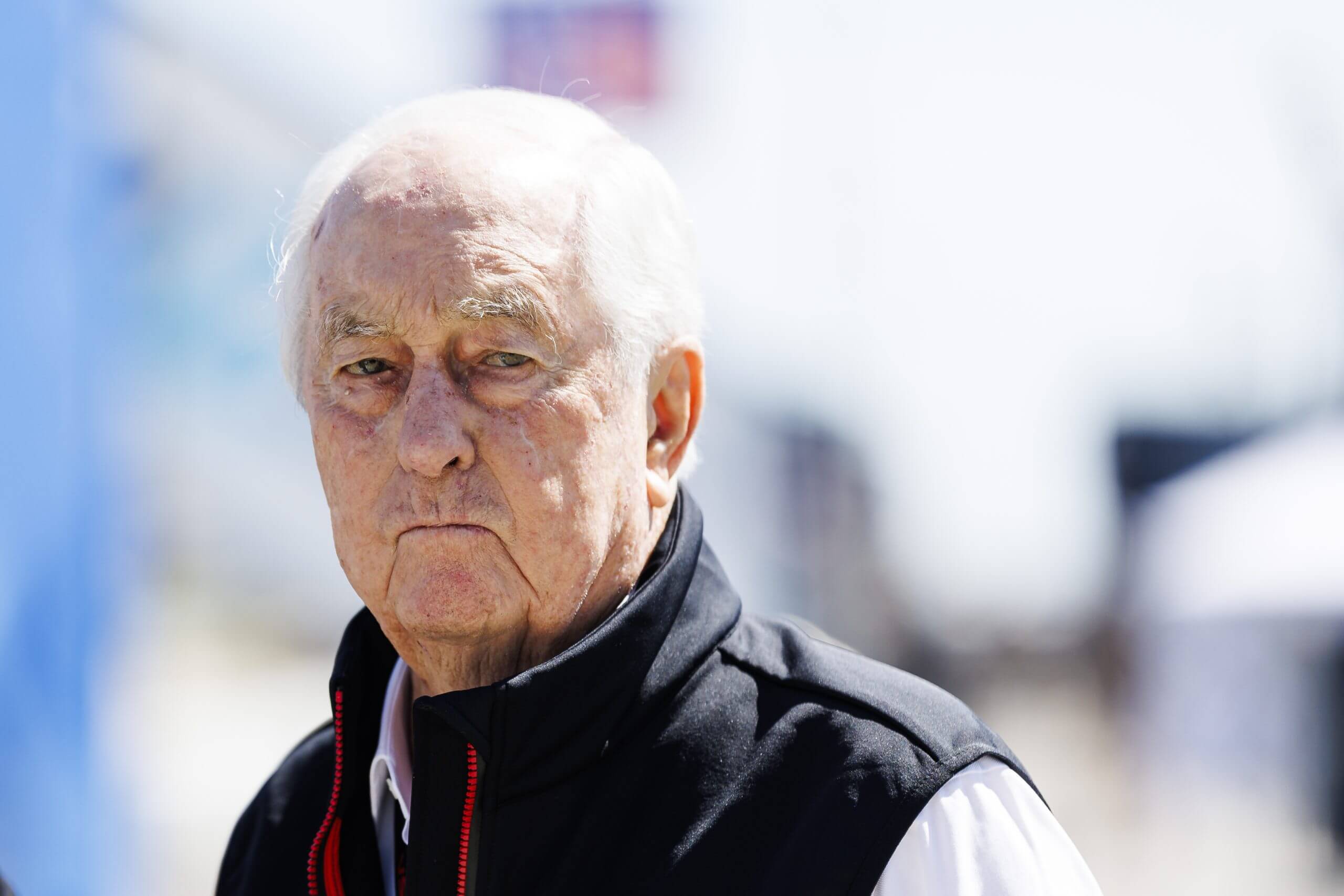
INDIANAPOLIS — The Indianapolis 500 is in the headlines this week for all the wrong reasons, overshadowing what had been an incredible upset for the pole position earlier this week.
Team Penske, the powerhouse racing organization and 20-time Indy 500 winner, is facing cheating allegations after it was found to have two illegal cars before last Sunday’s qualifying session.
Advertisement
Though they were penalized, the controversy was made worse by who owns the cars: Roger Penske, who also owns both the IndyCar Series itself and Indianapolis Motor Speedway.
Drivers Will Power and Josef Newgarden — the two-time defending Indy 500 champion who is trying to become the first driver to win three straight — were relegated to the last row of the 33-car field. And on Wednesday, Penske announced he had fired his top three IndyCar team executives.
But the situation is complex even for race fans, and there are many layers to the controversy. Here’s a look at what’s happening, what it means and what’s next.
OK, so what did Team Penske do?
In the rear of an IndyCar vehicle is a safety device called an attenuator, designed to cushion the blow from a rear impact into the wall. In the Indy 500, drivers race around the 2.5-mile speedway at nearly 230 mph, so any crash could result in a serious injury — or worse. The attenuator is supposed to absorb some of the impact instead of sending it all to the driver’s seat.
But the attenuator is a part which also falls under a crucial rule in IndyCar. To try to create a level playing field, IndyCar runs a spec car where almost all of the parts and pieces are the same for each team. That means teams are not allowed to modify any of those parts purchased from a single-source supplier, because it could create a competitive advantage if they do.
In this case, Team Penske is said to have modified the attenuators on two of its cars (driven by Newgarden and Power) because they had an unsightly transition between two pieces. Team personnel filled the gap and smoothed it over to create a flat surface. Though IndyCar president Doug Boles said he believed the infraction created no speed advantage — “0.0 miles per hour,” he said — it doesn’t matter. The rules were broken because the part was modified.
Why the No. 2 and No. 12 cars were not allowed to make a Fast 12 qualifying attempt. #Indy500 pic.twitter.com/4XvyZRmq8l
— INDYCAR on FOX (@IndyCarOnFOX) May 18, 2025
That’s it? That’s the scandal? Why is everyone so upset?
Well, here’s the thing. Initially, it didn’t seem like a huge deal. Newgarden and Power had already qualified to start inside the top 12 for Sunday’s race, and IndyCar allowed them to keep their positions as of last Sunday evening.
But on Monday morning, IndyCar changed its tune. It suspended the race strategists for each team, fined them $100,000 and sent the cars to the rear of the field — a harsher penalty than what the rulebook called for.
Advertisement
Except some felt that wasn’t enough, because photographic evidence soon emerged showing the cars had been using the illegal attenuators for at least a year. To make matters worse, Newgarden’s winning 2024 car — which is on display inside the track’s museum — has a modified attenuator in plain sight. That means Newgarden crossed the finish line last year with a part that should have been ruled illegal, but wasn’t.
Wait. How did they get away with it for so long?
Here’s where it starts to get even trickier. IndyCar teams regularly go through inspection before qualifying and the race. Team Penske cars, as seen in photographs, clearly were using the modified attenuators for a long time. And yet they were never busted until Sunday.
What gives? According to Boles, IndyCar technical inspectors mostly focus on areas of the car they feel would aid performance. They did not notice this area of the car, Boles said, because it was a safety-related part.
“Our team in tech does not, on a regular basis, look at those,” Boles said. “And this is one of those parts that was not looked at until it was seen on Sunday.
“Is that a miss? Absolutely. It’s a miss. Is it a part everybody should be exposed to in every event (and) if they’ve changed it, they’re outside of the rules? One hundred percent.”
To make matters worse, this isn’t the first time Team Penske has been caught up in a recent cheating scandal.
There was another one?!
Oh yeah. But much worse, because it actually affected performance unlike this one.
Last year, Team Penske was found to have software in their three cars that allowed drivers to deploy IndyCar’s “push to pass” engine boost at illegal times. Push to pass is supposed to be disabled on restarts, but Newgarden and teammate Scott McLaughlin both used it during the season opener in St. Petersburg, Fla., and were later disqualified.
Harsh penalties were also issued to all three Penske teams, and it was a highly embarrasing situation for Penske. Now a high-profile rules breach has happened for the second time in as many years.
I’m confused. Were officials intentionally looking the other way?
As Penske himself told Fox Sports on Wednesday, the “optics” of this situation are not good. Here’s Team Penske, who has won two straight Indy 500s and dominated qualifying last year by sweeping the three-car front row. Newgarden, Power and McLaughlin entered May as the favorites again and seemed to each have fast enough cars to win. Penske himself owns the series, and thus ultimately oversees the officiating in a sense, and this happened at a track he owns.
Advertisement
So no, it’s not a good look at all. But Boles said his queries into the officiating showed the attenuators were overlooked by mistake — not on purpose. He firmly believes his technical inspectors were not playing favorites with the Penske cars.
But Penske shouldn’t be in a position to have the integrity of himself or IndyCar questioned in the first place, which is a major reason why he fired his top three team executives on Wednesday. Now there will need to be changes to the technical inspection process as well.
EXCLUSIVE: Roger Penske, Chairman of Penske Corp, sits down with Jamie Little to address the Indy 500 qualifying rules violations that led to the dismissal of three Team Penske employees. pic.twitter.com/AyybePid10
— INDYCAR on FOX (@IndyCarOnFOX) May 21, 2025
What will IndyCar do to restore credibility?
Boles, who has been on the job as IndyCar president for only three months, vowed to spend the rest of this season working on the inspection process. He said considerations will be made to increase staffing, add more tools that would help detect improprieties, or simply increase the amount of time inspectors have to look at the cars. (They were only allotted 30 minutes to inspect 12 cars on the day in question.)
One issue on Sunday was Power’s violation was nearly missed. While an IndyCar inspector noticed the modified attenuator on Power’s car and was “95 percent sure” it was not legal, Boles said, Power’s car was still sent to line up on pit road for qualifying. Only after Newgarden’s car came through shortly thereafter did the inspector flag both cars as illegal, and they were pulled out of line instead of making an attempt at the Indy 500 pole.
Meanwhile, both Boles and Penske said conversations have been taking place for the last six months about a potentially independent officiating body which would not be under the purview of Penske’s leadership. An independent officiating group would handle everything from the technical inspection to managing the race from the control tower, but such a change is not imminent.
“I’m not making excuses; we made a mistake,” Boles said. “We missed something that is crucial to the way we go through tech, and that is a tech element that’s related to safety. And frankly, nothing is more important than safety on those cars, even more important than what’s happening on the racetrack, because we do not want to have our drivers injured.”

Roger Penske owns Indianapolis Motor Speedway, the IndyCar series, and the series’ most successful team. “We let people down,” he told Fox Sports. (James Gilbert / Getty Images)
Let’s go back to last year’s car. Any chance Newgarden loses the win?
Boles said the 2024 Indy 500 is viewed as complete, and the car in the museum won the race. It was viewed to be legal at the time. IndyCar is not going to go back and change the result of a race from a year ago; it’s in the record books now.
“It won the Indianapolis 500,” Boles said.
IndyCar is also not going to change the starting field. Rookie Jacob Abel failed to qualify for the race with a legal car, and it turns out Newgarden and Power made it with illegal cars. But Boles said IndyCar will not be putting Abel into the field, in part because Newgarden and Power’s cars both would have been fast enough to make it regardless (since the attenuators are not believed to have provided an advantage).
Advertisement
Abel, for what it’s worth, told Fox Sports he wouldn’t want to be included in the race under those circumstances anyway.
So is this controversy over?
Well, it depends what happens on Sunday in the Indy 500. McLaughlin starts 10th because his car did not have an illegal attenuator (Penske said they rotated them through their cars, and McLaughlin had a newer, unmodified one) and could certainly win the race.
And although no one has ever won from lower than 28th, only four drivers in the 108-year history of the race have won from lower than 22nd. To think Newgarden and Power could do it from the 30s is wild, but it also seems possible. Newgarden, in particular, has been exceptional over the last two years at Indy; giving him a lightning-fast car and 200 laps to get to the front is not impossible.
But regardless of whether they win, the reverberations from this incident are going to be felt within Team Penske for a long time to come.
(Top photo of Josef Newgarden earlier this week at Indy 500 practice: Justin Casterline / Getty Images)
This news was originally published on this post .








Be the first to leave a comment